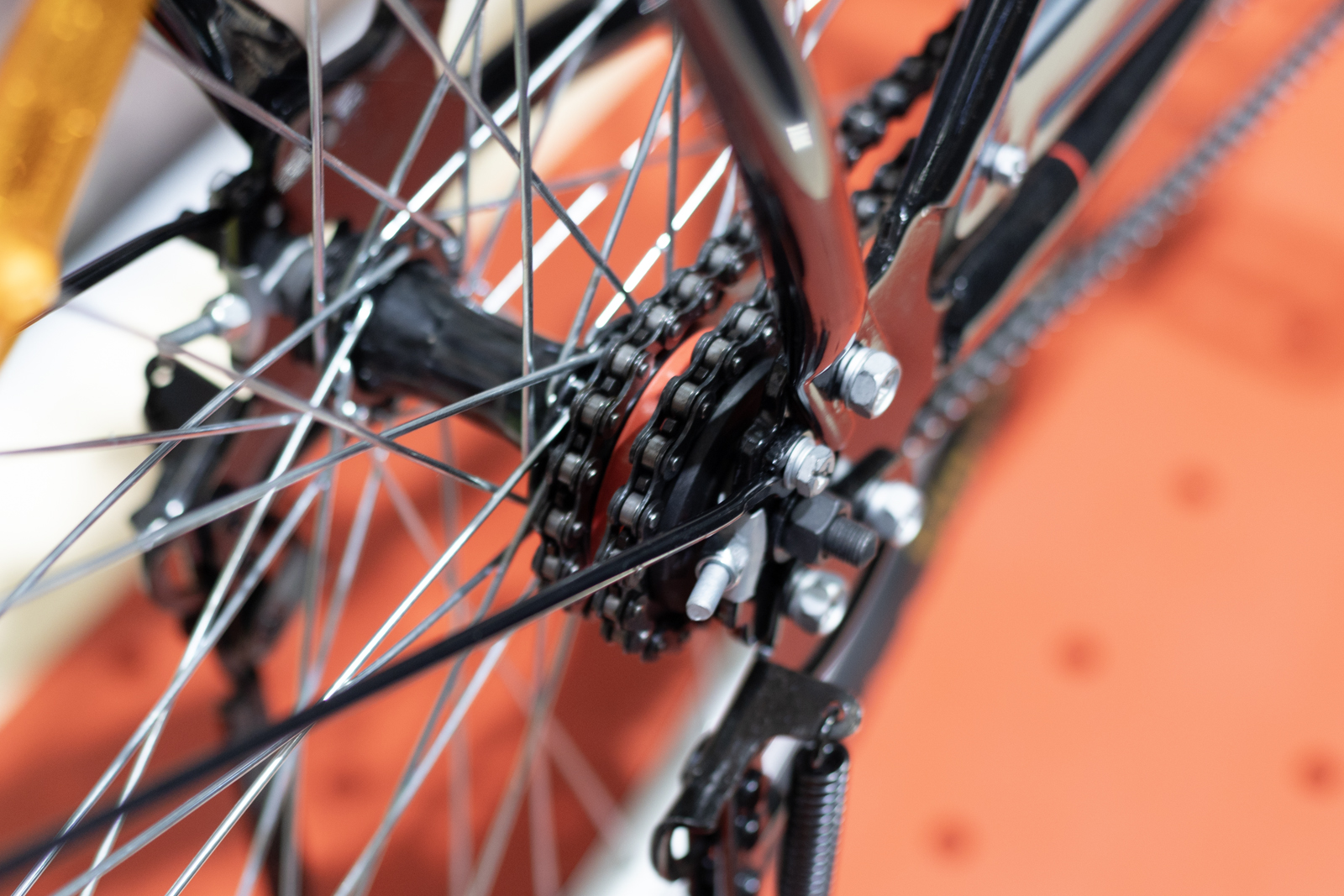New drivetrain keeps the bike free of cables and derailleurs
World Bicycle Relief’s Buffalo Utility S2 bike uses a two-speed two-chain drivetrain to help people cover more distance with less effort.
World Bicycle Relief is the world’s leading non-profit social enterprise focused on bicycle utility. It aims to empower individuals. Creating a bike that means people can “conquer challenging terrain” aids that goal.
Its previous Buffalo bike was singlespeed. The new AK2 drivetrain provides riders with an extra gear while keeping the bike free of cables and derailleurs, which add complexity and can break.
World Bicycle Relief worked with SRAM to develop the new system and the bike is on display at SRAM’s Eurobike stand.
Two chains, two speeds
Cherie Redecker, product manager at World Bicycle Relief, says the non-profit wanted to find a way to “provide more gears to people in rural areas to access education, healthcare and economic empowerment.”
“The engineers were really trying to see how they could create something simple without cables, without any external derailleurs breaking,” says Redecker. She adds that if a chain breaks you can still ride the bike.
The multispeed drivetrain consists of two freewheels, cogs, front chainrings and singlespeed chains.
Engineers at Worlrd Bicycle Relief worked with SRAM to create the patented shifting mechanism.
Redecker mentions one SRAM engineer in particular, Christine Raymor, who was involved in the development of eTap, but now assists World Bicycle Relief.
“She helped guide the team to make the product a reality”, says Redecker.
The AK2 drivetrain uses two single-speed freewheels to determine which cog and chainring combination drives the rear wheel.

The previous Buffalo bike’s backpedal brake has been repurposed for the new drivetrain. Redecker says: “To shift between the two gears you simply backpedal around half a turn. Then you pedal forward again and the bike shifts between gears.”
Shifting is accomplished by a shift ring. This engages or disengages the pawls of the cogs’ freewheels when backpedaling.
The Buffalo Utility S2’s low gear, which pairs an 18-tooth sprocket and 27-tooth chainring, disengages the outboard pawls so the pawls of the inboard cog are driving the wheel.
The high gear, which uses a 19-tooth sprocket and 45-tooth chainring, engages the pawls of the outboard cog. World Bicycle Relief says because of the difference in gear ratios, the outboard cog rotates faster than the inboard cog, overdriving the inboard pawls.
New brakes and other changes

The AK2 drivetrain meant World Bicycle Relief had to add new brakes to the Buffalo bike.
“Because we changed the backpedalling [coaster brake] to shifting, we needed to create caliper brakes”, says Redecker.
Redecker says the bike has been tested for two-and-a-half years, with great feedback about the brakes. The new brakes make stopping the bike easy, especially with heavy loads.
World Bicycle Relief has also updated the Buffalo bike’s wheels.
“We’ve changed from steel to aluminium rims, which makes the bike a little bit lighter.
“We used to have a four-cross spoke system, but we’re now going onto a three-cross system that helps make lacing the wheel easier. It creates less spoke breakage, and has been quite successful,” says Redecker.
The new bike sticks to one frame size and still uses the Buffalo saddle, pedals, kickstand and tyres made in conjunction with Kenda.
“The pedals, saddle and tyres aren’t just bought by people who own Buffalo bikes,” says Redecker, explaining that people know Buffalo products are durable and “will last longer and they won’t have to service it.”

Redecker says the Buffalo bike also has “a good name” in Zambia and Zimbabwe and people in better income groups will buy the bike, where it costs around $210 to $230.
The Buffalo bike’s frame, fork and rack comes with a five-year warranty – even if the bikes tend to last longer.
Redecker says World Bicycle Relief is looking to improve the bike’s bearings to lengthen the bike’s lifetime.
Beyond the bike

World Bicycle Relief looks beyond the Buffalo bike to achieve its goal of enabling people to access education, healthcare, economic opportunities and vital services.
The non-profit, founded in 2005 after the 2004 Indian Ocean Tsunami by SRAM co-founder F.K. Day and his wife documentary photographer Leah Missbach Day, ensures there are distribution facilities, spare part supply chains and trained local mechanics, in areas where people ride its bikes.
Redecker says: “Our main goal is really to create this amazing bicycle ecosystem where we have the product development, but also training, mechanics, and our program in the countries. It’s really trying to empower more people so they can thrive and reach their dreams.”
World Bicycle Relief has warehouses in Uganda, Malawi, Zimbabwe, Zambia, Kenya and Colombia. But it also works with the UN and other organisations to provide bikes via their own programs.
Redecker says for its programmes, World Bicycle Relief considers who needs a bike. This includes children who live more than 3km from their school, healthcare workers and others.
Women face cultural barriers to accessing education, healthcare and employment, where World Bicycle Relief operates. Consequently, the organisation prioritises women and girls.
World Bicycle Relief supports communities by working with them to establish where there is a need for bicycles, how it can get mechanics and what training is required.
Redecker sums it up as listening: “It’s not just coming in and saying, ‘This is what you’re doing’. It’s hearing their voice and what they need.”